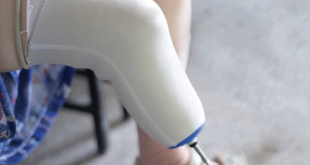According to The New York Times’ “Corona Vaccine Tracker”, till Nov 17, 2020, there are 54 vaccines in clinical trials on humans, and at least 87 preclinical vaccines that are under active investigation in animals. Till date, 38 potential vaccines for COVID-19 are undergoing Phase 1 trials (safety and dosage testing); 17 are in Phase 2 (expanded safety trials); 12 in Phase 3 (large-scale efficacy tests); and 6 that have been approved for early or limited use. None have been approved for full use as yet. It must be noted that the first vaccine safety trials in humans started in March, 2020, and the fact that so many have reached the final stages of testing speaks volumes about the speed of vaccine development, perhaps the fastest in history.
The vaccine testing process, from laboratory to clinic, is a multistep process that involves 1. Preclinical testing, in which a new vaccine, after testing on cells, is injected into animals to see if it elicits an immune response, 2. Phase 1, in which the vaccine is given to a small number of human volunteers to test safety and dosage, and to confirm that it stimulates an immune response, 3. Phase 2, in which the vaccine is given to hundreds of people divided into groups to see if the vaccine acts differently in them, and the vaccine is also tested further for safety and ability for immune system stimulation, 4. Phase 3, in which the vaccine is given to thousands of human volunteers to see how many become infected, compared with those receiving a placebo.
In June, the US Food and Drug Administration (FDA) advised vaccine producers that the vaccine under trial should protect at least 50 percent of those receiving it, and that the Phase 3 trials should be large enough to reveal evidence of relatively rare side effects. Vaccine developers are also combining different phases to accelerate vaccine development. In cases where worrying symptoms are observed, the trial can be put on pause, and may either be resumed or abandoned depending on investigation results.
Vaccines on the Way
CanSino Biologics, Phase 3 (approved for limited use in China)
CanSino Biologics of China has developed a COVID-19 vaccine in partnership with the Institute of Biology at the Academy of Military Medical Sciences. In May, results of the Phase 1 trial of the vaccine, which is based on an adenovirus called Ad5, showed promising results, and after the Phase 2 trial, in July, the company reported that the vaccine produced a strong immune response. The vaccine was approved on June 25 for a year as a “specially needed drug. CanSino has been conducting Phase 3 trials in a number of countries, including Russia, Pakistan, and Saudi Arabia, since August 2020.
Sinopharm, Phase 3 (approved for limited use in UAE)
Another Chinese company, Sinopharm, has put into clinical tests an inactivated virus vaccine developed by the Wuhan Institute of Biological Products, with the Phase 1/2 trial demonstrating that it produced antibodies in volunteers. In July and August, Phase 3 trials were launched in the UAE, Peru, and Morocco, with UAE granting approval on September 14 for emergency use on health workers.
Sinopharm, Phase 3 (approved for emergency use in UAE)
After early clinical trials in China, Sinopharm launched Phase 3 trials of its second inactivated virus, developed by the Beijing Institute of Biological Products, in the UAE and Argentina. The UAE approved the vaccine for emergency use on healthcare workers on September 14, 2020. The company aims to manufacture a billion doses a year od its two vaccines.
Sinovac Biotech, Phase 3 (approved for limited use in China)
Sinovac Biotech, one more Chinese company, is testing its inactivated vaccine called CoronaVac, and in June, it announced that the vaccine elicited immune response and no severe adverse effects were seen in 743 volunteers during its Phase1/ 2 trials. The Phase 3 trials began in Brazil, Turkey, and Indonesia in July and August. In July, Chinese authorities gave the vaccine emergency approval for limited use. The company also registered a Phase 1/ 2 trial for children on September 16, 2020. Indonesia will be buying 40 million doses by March 2021.
Gamaleya Research Institutepart, Phase 3 (approved for early use in Russia)
In June 2020, the Gamaleya Research Institutepart in Russia started trials of its vaccine, named Gam-Covid-Vac, (a combination two adenoviruses, Ad5 and Ad26, engineered with a coronavirus gene). On August 11, the government approved the vaccine (now renamed Sputnik V) before Phase 3 trials had even begun. The authorities stated that the approval was only a “conditional registration certificate,” with final decision depending on positive results from the Phase 3 trials, which involves 40,000 volunteers from Russia, Belarus, Venezuela, and the UAE. On October 17, a Phase 2/3 trial was started in India. On September 4, the company announced that Sputnik V produced antibodies and had mild side effects. On Nov. 11, based on 20 cases of Covid-19 among the trial participants, it was claimed that the vaccine had 92 percent efficacy.
Pfizer and BioNTech, Phase 2/ Phase 3 combined phases
On November 9, New York-based Pfizer and German company BioNTech presented initial data showing 90 percent efficacy of their vaccine and were in the process of applying for emergency use authorization in the USA. The Phase 1/ 2 trial of two mRNA vaccines was launched in May, 2020. Since one version, BNT162b2, produced fewer side effects, on July 27, it was chosen to move on to Phase 2/3 trials, with 30,000 volunteers. On Sept. 12, the two companies declared that they would expand their U.S. trial to 43,000 participants. In July, the government awarded them a $1.9 billion contract for 100 million doses to be delivered by December, with the option of 500 million more doses. Japan and the EU have ordered 120 million doses and 200 million does, respectively. The two companies plan on manufacturing about 1.3 billion doses by the end of 2021.
Moderna, Phase 2/ Phase 3 combined phases
On November 16, based on initial analysis of it Phase 3 trial that was started in July, US company Moderna claimed that its vaccine (which is based on an mRNA molecule encoding the spike protein) showed almost 95 percent efficacy, and stated that it would be soon applying for emergency use authorization. The trial results also indicated that the vaccine seems to protect patients from severe disease. The US government has provided one billion dollars to support development of the vaccine, which is being done in partnership with the National Institutes of Health. The government awarded another $1.5 billion on August 11 in exchange for 100 million doses, if the vaccine proves safe and effective.
Johnson & Johnson, Phase 3
Johnson & Johnson has developed a vaccine out of Adenovirus 26 (Ad26), a method developed by researchers at Beth Israel Deaconess Medical Center in Boston when developing the Ebola vaccine a decade ago. The US government provided the company $456 million in March to support their move towards production. The Phase 1/2 trials began in July, followed by Phase 3 in September, with 60,000 participants. The government offered another one billion dollars in August for 100 million doses, if the vaccine is approved, and similarly, the EU, on October 8, agreed to buy200 million doses. The company plans to manufacture one billion doses in 2021.
AstraZeneca and the University of Oxford, Phase 2/Phase 3 combined phases
AstraZeneca, a British-Swedish company, and the University of Oxford have developed a vaccine based on a chimpanzee adenovirus called ChAdOx1. Phase 1/2 trials have showed no severe side effects, and the vaccine produced antibodies against the coronavirus. Phase 2/3 trials are undergoing in England and India (where it’s known as Covishield), as well as in the US, Brazil, and South Africa. The US government gave the project $1.2 billion in May for 300 million doses, if the vaccine proves effective, and the EU has ordered 400 million doses.
Novavax, Phase 3
US company Novavax, which launched trials for a COVID-19 vaccine in May, is supported by the Coalition for Epidemic Preparedness Innovations with a grant of $384 million, and in July, the U.S. government provided $1.6 billion to support its production. Phase 2 trials began in August in South Africa, with the blinded, placebo-controlled trial on 2,900 volunteers measuring both safety and efficacy of the vaccine, and in September, the company began its Phase 3 trials in the UK, involving 15,000 volunteers. Results are expected by early 2021. A bigger Phase 3 trial will begin in the US by November-end. If proven to be effective, the company will deliver 100 million doses in the US by the first quarter of 2021, and on November 4, an agreement was reached with Australia for 40 million doses.
Medicago, Phase 2/Phase 3 combined phases
Medicago, a Canadian company that is partly funded by cigarette maker Philip Morris, uses a tobacco species to make vaccines by delivering virus genes into leaves, after which the plant cells create virus-mimicking protein shells. The company began its Phase 1 trials in July on a plant-based COVID-19 vaccine in combination with adjuvants to boost immune system response. Phase 2/3 trial of the vaccine began on November 17, 2020. The company reached an agreement on October 23 with the Canadian government to deliver 76 million doses.
Bharat Biotech, Phase 3
Bharat Biotech, in collaboration with the Indian Council of Medical Research and the National Institute of Virology, has designed a vaccine (Covaxin) based on an inactivated form of the coronavirus. Clinical trials were launched in July, with Phase 3 trials starting on October 23, 2020. The company expects its vaccine to be available around early 2021.
Murdoch Children’s Research Institute, Phase 3
A Phase 3 trial called the BRACE, conducted by the Murdoch Children’s Research Institute in Australia, is ongoing to see if the BCG vaccine partly protects against the coronavirus.
Reference:
- The New York Times, November 17, 2020, https://nyti.ms/2IENuqe
 Medicosnext
Medicosnext





I am sure this paragraph has touched all the internet viewers, its really really pleasant article on building up new website. Doralynne Oby Braca